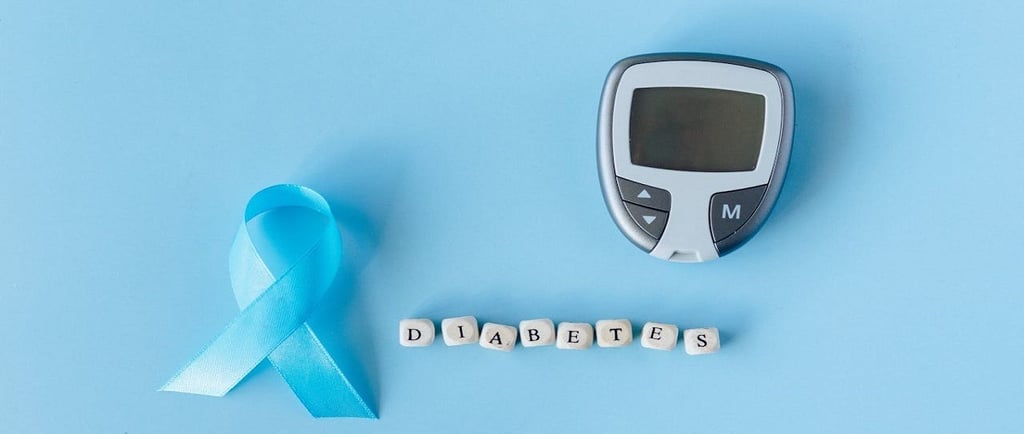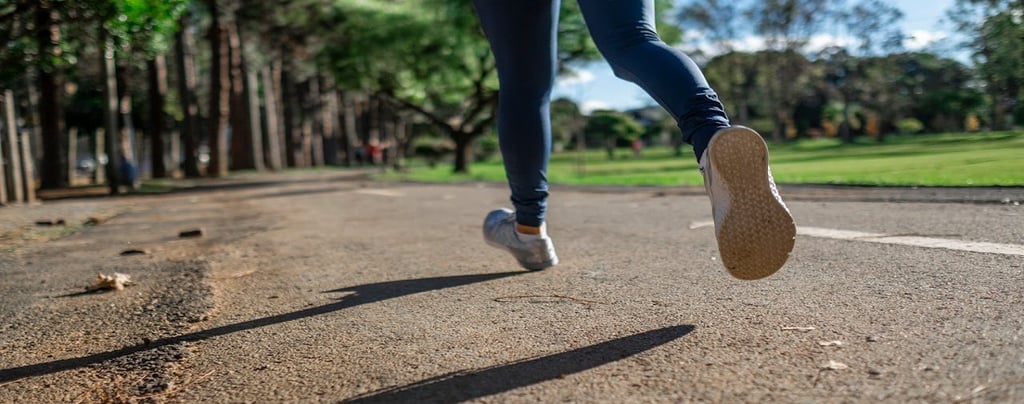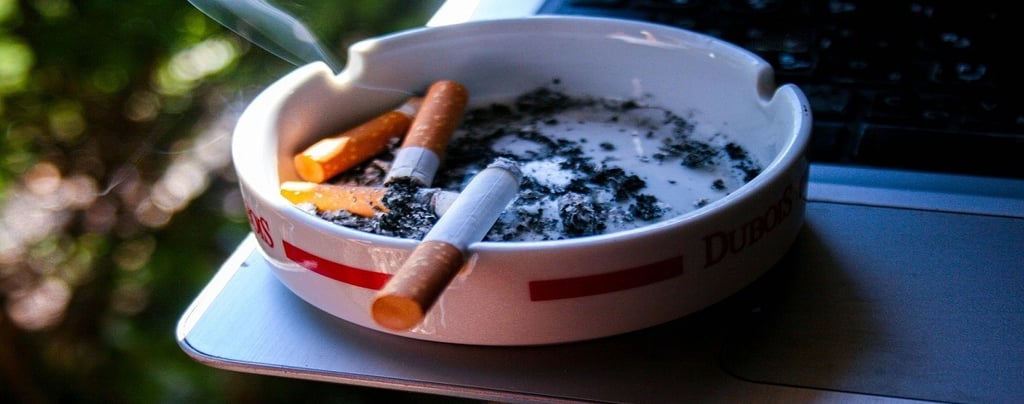Top 10 Lifestyle Causes of Diabetes
The presence of excess unused glucose in the blood causes diabetes. Several reasons, such as overweight, processed foods, etc., can cause diabetes. Read this article to learn more!


Glucose is the body's primary source of energy. When we eat our food, the body converts the carbohydrates ( sugar and starch) into glucose, which is released into the bloodstream. Our pancreas produces a hormone called insulin, which moves glucose from the bloodstream into the body's cells for energy.
Diabetes is a medical condition in which blood sugar (glucose) levels increase above normal levels. This may be due to the reduced production of insulin from the pancreas or the improper response of the body's muscle, fat, and liver cells to the insulin, also called insulin resistance.
Diabetes can be mainly categorized into type 1 and type 2 diabetes. Type 1 diabetes is an autoimmune disease in which the body's immune system mistakenly attacks and destroys the beta cells of the pancreas, which produce insulin. As a result, the pancreas produces very little or no insulin.
Type 2 diabetes is mainly caused when the body doesn't use insulin properly ( insulin resistance), or reduced insulin production by the pancreas, or both. Increased thirst, frequent urination, weight loss, blurred vision, etc., can be the symptoms of type 2 diabetes.
In this article, we will discuss major lifestyle causes of type 2 diabetes.
1. Overweight or Obesity


Overweight or obesity is one of the major causes of type 2 diabetes in the world. The accumulation of fat in the lower abdomen increases the risk of developing type 2 diabetes. So, a person with an apple-shaped body (more fat in the stomach area) is more prone to diabetes than one with a pear-shaped body (fat in the hips and thighs). This is because the liver produces an enzyme called DPP4, which increases the inflammation in the fat cells of the abdominal area ( visceral fat), causing an increase in insulin resistance.
You can use the BMI (Body Mass Index) to monitor weight. It is calculated by dividing the weight in kilograms by height in meters squared. A BMI ratio of 20 to 25 is considered normal weight, from 25 to 30 is considered overweight, and above 30 is considered obese. You can also use other methods, like WHR (waist-to-hip ratio), for the fat accumulation in the abdominal area.
2. Poor Diet


According to a study 70% of the diabetes cases are caused by poor diet. Glycemic Index (GI) is the measure of how quickly the food increases blood sugar levels. It is a scale from 0 to 100; foods having a GI value of more than 70 are high GI foods. Such foods quickly release the glucose into the bloodstream. If this glucose remains unused in the bloodstream for longer due to the body's non-requirement of the fuel, it causes a blood sugar spike. To counter this blood sugar spike, the pancreas releases excessive insulin, which lowers the blood sugar below normal levels, causing a sugar crash. Frequent blood sugar spikes and sugar crashes cause insulin resistance and type 2 diabetes.
Avoid high-GI foods such as white bread, white rice, potatoes, cakes, etc. Consume more low-GI foods like fish, lean meats, eggs, almonds, and plain yogurt.
3. Sedentary Lifestyle


A sedentary lifestyle is one of the leading causes of type 2 diabetes. Techonlogy has made our lives easier with less physical effort. More people use cars and bikes to commute, use lifts and escalators, and sit for hours in the office. Lack of physical activity can cause weight gain or obesity, which increases the risk of type 2 diabetes.
Due to a lack of movement in skeletal muscles, they become less sensitive to insulin, leading to insulin resistance.
Your body needs to utilize the sugar (glucose) derived from the food. Physical activity helps to burn the glucose in the blood; inactivity increases the glucose levels in the blood, which causes diabetes.
Use stairs instead of escalators, commute with bicycles, take mini strolls between office work, do your laundry by hand, wash your dishes, do gardening, etc. In short, move as much as you can; the longer you sit, the higher the risk of diabetes.
4. Stress


Stress has become an inevitable part of everyone's life, whether it's office stress, financial stress, relationship stress, or personal or traumatic stress. Prolonged unmanaged stress can seriously harm your health.
Whenever the body experiences stress or a dangerous situation, it releases adrenaline (epinephrine) hormone, also known as the fight or flight hormone, from the adrenal gland located above the kidneys, which redirects blood towards the muscles, increases heartbeat, and signals the liver to release stored glycogen to raise blood sugar levels for energy. Adrenal glands also decrease insulin production from the beta cells of the pancreas through alpha-2 adrenergic receptors. Through this mechanism, the body reduces the uptake of sugar (glucose) by cells and tissues, allowing more sugar to remain in the bloodstream as a ready energy source to overcome stressful situations. Frequent adrenaline exposure can also lead to insulin resistance.
The increase in blood sugar due to adrenaline is generally short-term. However, if the stressful situation stays for longer, the body prepares itself to be in alert mode and increases the production of cortisol ( stress hormone) from the adrenal glands. Higher cortisol levels decrease insulin secretion from the pancreas and increase glucagon secretion, which escalates the blood sugar levels for a longer period and also causes insulin resistance.
Frequent adrenaline exposure and higher cortisol levels increase the risk of type 2 diabetes.
You can manage stress through yoga and meditation, or even a simple deep breathing exercise can help relieve it.
5. Lack of Exercise


Exercise plays a vital role in managing diabetes. Lack of exercise decreases the muscle's insulin sensitivity, causing insulin resistance. Due to which muscles can't properly use the sugar (glucose) present in the bloodstream, causing increased blood sugar levels. Inactivity can also cause weight gain and obesity, which increases the risk of type 2 diabetes.
Stored glucose (glycogen) in the muscles is used as an energy source during exercise. The muscles replenish their depleted glycogen levels from the blood glucose, causing a decrease in blood sugar levels.
Regular exercise improves the muscles' insulin sensitivity, allowing muscles to use blood glucose with less insulin requirement. When the muscles contract during exercise, they take up blood glucose even in the absence of insulin.
Exercise for at least 25-30 minutes daily. You can perform any exercise of your choice, whether it's skipping, stair climbing, swimming, running, or even a brisk walk. Exercising consistently can reduce the risk of diabetes.
6. Improper Sleep


Improper sleep or sleep deprivation can affect insulin levels, which raises blood sugar (glucose) and increases insulin resistance.
Lack of sleep increases the production of ghrelin (the hunger hormone) and decreases leptin (the satiety hormone), so you feel hunger more frequently and tend to overeat. Higher ghrelin hormones can cause weight gain and obesity, which subsequently increases the risk of type 2 diabetes.
Lack of sleep increases cortisol levels ( stress hormones) in the body, which elevates blood sugar levels and causes insulin resistance.
Prolonged improper sleep increases inflammation in the body. High inflammation causes insulin resistance in fat, muscle, and liver cells, so the body can't utilize the blood glucose properly, leading to an increased risk of type 2 diabetes.
Try to have 7 to 9 hours of deep sleep. Avoid using mobiles and laptops before bed. Darkness promotes melatonin production (hormones that promote sleep), so keep your sleeping room dark and comfortable.
7. Skipping Breakfast


When you skip breakfast, your body increases the production of hormones like cortisol and glucagon to raise blood sugar levels by releasing stored glucose to give energy, which causes a blood sugar spike. Higher levels of these hormones increase insulin resistance.
Skipping breakfast can lead to overeating later in the day, which increases blood sugar levels for longer and makes it harder for the body to manage. It causes a blood sugar spike and potentially contributes to weight gain; these factors increase the risk of insulin resistance and type 2 diabetes.
Consume lean protein, fiber, and healthy fats-rich foods. You can eat eggs, nuts, oats, quinoa, etc., for breakfast to manage blood sugar.
8. Alcohol


Alcohol has empty calories ( without any nutrients). When you consume excess alcohol, these extra calories are converted into triglycerides (a type of fat) by the liver and stored in fat cells. Too much alcohol can make the liver fatty and increase insulin resistance, so it stores less glucose as glycogen and releases more glucose in the bloodstream, causing higher blood sugar levels.
The liver produces its glucose through a process called gluconeogenesis (production of glucose from non-carbohydrate sources). Normally, insulin inhibits gluconeogenesis when blood sugar levels are high. However, when insulin resistance increases, insulin is unable to halt this process, and the liver continues to produce more glucose, even in the presence of high blood sugar levels.
Drinking alcohol on an empty stomach can cause hypoglycemia (low blood sugar). One of the major functions of the liver is to detoxify. When you consume alcohol, the liver treats it as a toxin and prioritizes metabolizing alcohol over blood glucose formation to prevent the damage, which can result in low blood sugar. Symptoms of low blood sugar can be a lack of coordination, dizziness, or fatigue, which are quite similar to getting drunk, so the risk increases as it is difficult to differentiate between the two.
Avoid completely or limit alcohol consumption to one drink a day for females and two drinks a day for males. A drink can be around 150 ml of wine, or 350 ml of beer, or 45 ml of whiskey or vodka. Keep eating snacks while drinking to reduce the risk of hypoglycemia (low blood sugar).
9. Highly processed and Junk Foods


Ultra-processed and junk foods like sugary drinks, cookies, burgers, fries, bacon, sausages, hot dogs, etc., are often high in calories and sodium, contain unhealthy fats and added sugars, and are low in fiber and other essential nutrients.
Due to a lack of fiber, these foods cause blood sugar spikes and crashes, which disrupt insulin functioning, leading to insulin resistance. So the cells don't respond properly to the insulin, increasing the risk of diabetes. Also, food low in fiber doesn't provide satiety, so you tend to overeat. Excessive processed and junk food consumption can cause weight gain and obesity, which is one of the major causes of type 2 diabetes.
Consume more whole grains and fiber-rich foods like whole wheat, nuts, brown rice, barley, oats, quinoa, etc., to manage blood sugar.
10. Smoking


Cigarette smoking increases the risk of type-2 diabetes by 30 to 40% more than in non-smokers. It contains nicotine, a chemical that causes insulin resistance, making cells less sensitive to insulin. Nicotine also reduces the production of insulin from the beta cells of the pancreas, which results in higher blood sugar levels.
Cigarette smoke contains reactive oxygen species (ROS) or free radicals and other oxidants like hydrogen peroxide, quinones, and peroxynitrite, which cause oxidative stress and damage cells and tissues. To combat this oxidative stress, the body triggers inflammation to heal itself. Excessive inflammation increases insulin resistance, which contributes to type 2 diabetes.
Smoking increases the fat accumulation in the abdomen ( belly fat), which is one of the main culprits of insulin resistance and type 2 diabetes.
If you are having a problem quitting smoking, consult your doctor for assistance.
